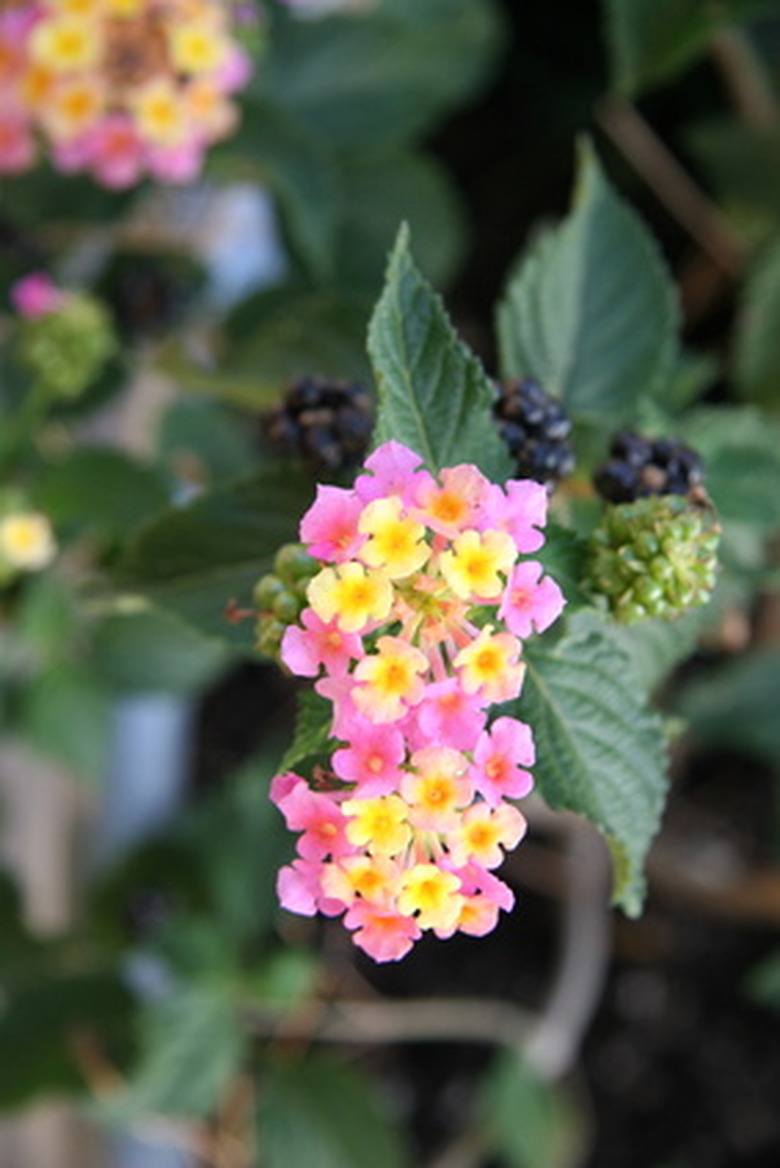How To Plant Blackberries In Oklahoma
Things Needed
- Tiller
- Soil pH test
- Ground rock sulfur
- Limestone
- Water
- Organic compost
- Shovel
- Pruning clipper
- 10-20-10 fertilizer
Blackberries adapt well to most areas in Oklahoma, making the state a desirable planting location. The plant prefers a well-draining, moist soil and is found in many Oklahoma home gardens due to the ease of growth and maintenance. Blackberry canes are a biennial plant that produces fruit only on the two-year-old canes. Proper care and pruning maintenance will create plants that produce fruit up to 15 years of age with the best production in years three through eight.
Step 1
Select a planting location for the blackberry canes that has well-draining soil, full sunlight and air circulation around the plants. A sandy loam soil with 2- to 4-percent organic matter works well for growing blackberries.
Step 2
Remove all weeds and vegetative growth from the planting area. Use a tiller to loosen the planting soil to a depth of 10 inches.
- Blackberries adapt well to most areas in Oklahoma, making the state a desirable planting location.
- Select a planting location for the blackberry canes that has well-draining soil, full sunlight and air circulation around the plants.
Step 3
Test the soil pH to verify it is 6.0 to 6.5. Add ground rock sulfur to lower the pH number or limestone to increase the pH number as needed. Water the soil well and let it rest two weeks before planting.
Step 4
Work 3 to 4 inches of organic compost into the planting soil with a tiller. Dig a 2- to 3-inch deep hole that is wide enough to accommodate the spread of the roots. Place the roots of the blackberry cane into the hole and gently cover with soil. Space the plants 2 to 3 feet apart in rows that are 8 feet apart.
- Test the soil pH to verify it is 6.0 to 6.5.
- Work 3 to 4 inches of organic compost into the planting soil with a tiller.
Step 5
Water the blackberry canes generously after planting to stimulate root growth. Continue to water the plants to keep the soil moist with 1 to 2 inches of water each week during the growing season.
Step 6
Prune the plants to 4 inches above the ground immediately after planting to force new cane growth.
Step 7
Apply a 4-inch layer of mulch around the blackberry canes to limit weed growth around the plants and increase moisture retention. Straw or pine bark work well around blackberries.
Step 8
Fertilize the blackberry plants each year after the first year of growth. Apply a 10-20-10 fertilizer at the time of blooming to stimulate fruit production. Water the canes well after applying fertilizer to assist with absorption.
- Water the blackberry canes generously after planting to stimulate root growth.
Tip
Blackberry varieties that grow well in Oklahoma include Arapaho, Cherokee, Cheyenne, Choctaw, Navaho and Shawnee. Prune to remove two-year-old canes after the fruit is harvested to stimulate new plant growth for future fruit production.
